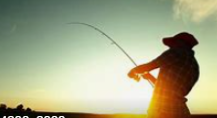K-State plans program to discuss connection between art, societal issues
New program is an outgrowth of 4-H Community Conversations
MANHATTAN, Kan. – An innovative 4-H program launched recently to encourage people to talk openly about society’s controversial topics is providing a springboard for an upcoming effort incorporating the visual arts.
Aliah Mestrovich Seay, a Kansas 4-H youth development specialist for culture and communication skills development, said the organization has formed a partnership with K-State’s Marianna Kistler Beach Museum of Art and the Institute for Civic Discourse and Democracy to offer the program, Visual Thinking Strategies.
“It’s an arts-based narrative inquiry that allows participants to be exposed to a series of different types of art, and unpack what is happening in those pieces of art in a very civil way,” Mestrovich Seay said, noting that the program is still three to six months from being fully launched.
“An arts-based narrative inquiry allows us to connect art and storytelling, and in this case, identity development. We try to connect our values, our beliefs and our behaviors through the medium of art and connect it to our lived experience. That allows us to build more understanding and awareness around our own selves – in this case our cultural self – and more awareness about the cultural selves of those who are different than we are.”
Led by trained youth and adult facilitators, the program will expose participants to artwork that depicts aspects of identity related to race, gender and other diversity dimensions.
Mestrovich Seay said Visual Thinking Strategies is a reflection of a program piloted the past year, called 4-H Community Conversations, which is led by trained youth facilitators who use their leadership and communication skills for reasoned, public discussion on what are often controversial topics.
Some of the subjects discussed recently in Community Conversations include health, safety, violence, education, drugs and alcohol abuse, bullying, rural and urban issues, and others. Youth and adults have been introduced to national models of public deliberation, including the National Issues Forum.
In the new program, Mestrovich Seay said the project’s partners will choose artwork depicting some aspect of a relevant social issue that would benefit from increased community dialogue.
“Art impacts people differently,” Mestrovich Seay said. “It will evoke different feelings and emotions and that’s what we’re shooting for. There is a way to go about doing this, different techniques we can use, and that’s why we have trained facilitators who will lead discussions.”
Timothy Shaffer, director of the Institute for Civic Discourse and Democracy, said Visual Thinking Strategies invites participants to reflect on their own ideas and assumptions.
“Today, this is a crucial skill for members of a diverse society in order to have the ability to view something with others and see something differently from others,” he said. “Using the Visual Thinking Strategies model of discussion, people will be able to explain these differences and, in the process, come to better understand why someone else potentially is seeing something different than they do.”
For now, the youth trained as facilitators during Community Conversations will also be trained to lead discussion in Visual Thinking Strategies, according to Mestrovich Seay.
“Typically what happens is that the facilitator will ask the audience an open-ended question, like ‘what’s going on in this picture?’” she said. “That allows people to openly interpret and express themselves and share what they see.”
The next question, typically, is to ask participants what they are seeing that led to their answer.
“We ask for visual evidence, not just what they think,” Mestrovich Seay said. “That’s a way to build their critical thinking skills around art.”
And finally, she adds, the facilitator asks what more can be found in the picture.
“Just like when we’re talking about societal issues that are really difficult, that question brings up tough conversations and maybe even conflict,” Mestrovich Seay said. “There are multiple answers to that question, so it promotes flexible thinking. All of this ties into the principles of civic and civil discourse.”
Shaffer adds: “Visual Thinking Strategies is a tremendous tool for inviting people to pause and reflect on an image, even one that seems to have a ‘right answer.’ Being asked to consider alternatives to how one sees an image is a helpful reminder that we see — and experience — the world differently.”
The program will be offered through the Kansas 4-H Youth Development program, and will be open to people of all ages, including adults. Mestrovich Seay said organizers are currently working to train adult facilitators, extension agents and volunteers to participate, as well.
“I am so excited about how this innovative program, with a diverse set of partners, will continue to grow youth skills to become effective community leaders,” said Wade Weber, the state program leader for Kansas 4-H.
More information on Visual Thinking Strategies will be available on the Kansas 4-H Youth Development website as it becomes available.
FOR PRINT PUBLICATIONS: Links used in this story
Marianna Kistler Beach Museum of Art, https://beach.k-state.edu
Institute for Civic Discourse and Democracy, https://www.k-state.edu/icdd
National Issues Forum, https://www.nifi.org
Kansas 4-H Youth Development, https://www.kansas4-h.org
K‑State Research and Extension is a short name for the Kansas State University Agricultural Experiment Station and Cooperative Extension Service, a program designed to generate and distribute useful knowledge for the well‑being of Kansans. Supported by county, state, federal and private funds, the program has county extension offices, experiment fields, area extension offices and regional research centers statewide. Its headquarters is on the K‑State campus in Manhattan. For more information, visit www.ksre.ksu.edu
Story by:
Pat Melgares
785-532-1160
** This news release from K-State Research and Extension is available online at https://www.ksre.k-state.edu/news/stories/2020/07/visual-thinking-strategies-connects-art-societal-issues.html
Released: July 10, 2020
For more information:
Aliah Mestrovich Seay
785-532-5800




